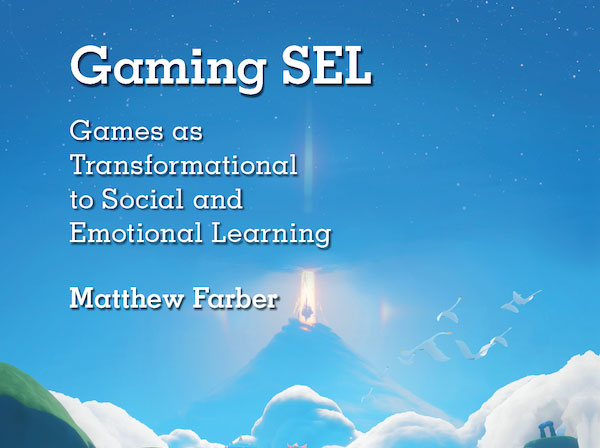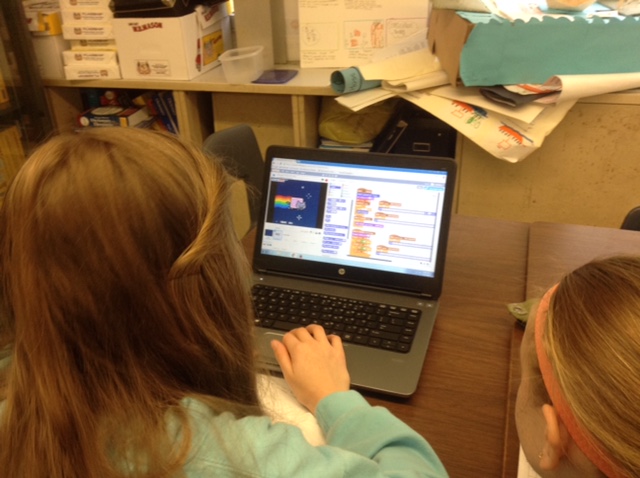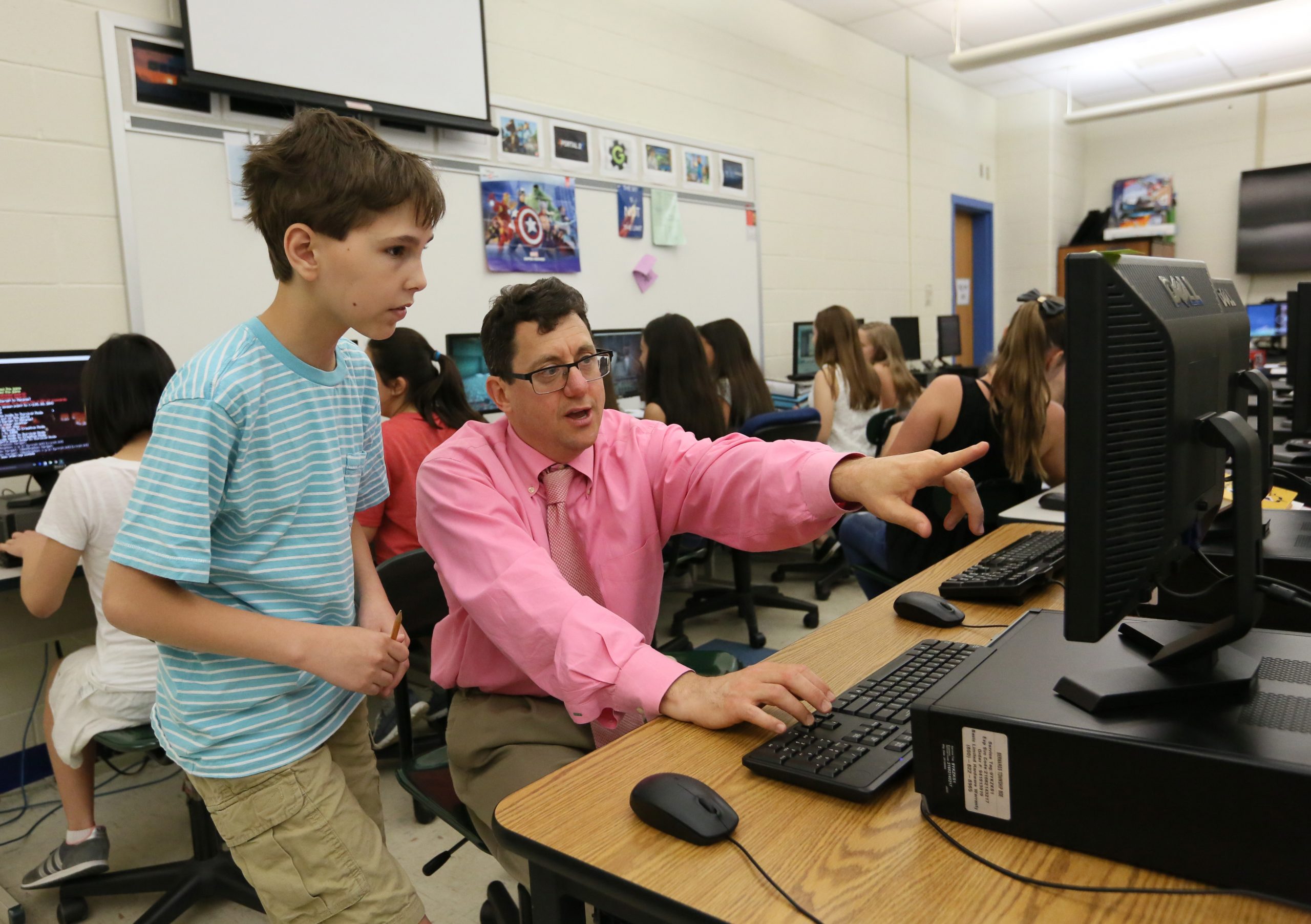Both Minecraft and YouTube are ubiquitous in today’s children’s media culture. And like millions of other children, my six-year-old son loves to watch Minecraft videos on YouTube. He frequently watches Grian’s how-to-build-it Minecraft videos. He enjoys the silly antics from Pat and Jen of Gaming with Jen, the husband-and-wife team who produce PopularMMOs. And he loves Stampy Cat—but more on Stampy later.
Minecraft-themed YouTube videos are definitely a different genre from the children’s television that I grew up watching!

As is the case with all media, some of these videos are more appropriate for young children than others. As parents, we do our best to monitor the YouTubers our son watches. For our family, digital media is not a babysitter. We are strong proponents of the idea that educational programming is more effective when children share what they are learning about and parents help their children make connections from the screen to real life. This is known as coviewing, a notion long championed by PBS, as well as by the Cooney Center. And while some may say YouTube allows children to go down a rabbit hole of questionable content, it can also be a great opportunity for coviewing while encouraging children to be independent, selecting content to view based on their interests.
Exploring Coviewing Through Wonder Quest
One evening, my wife overheard a deep discussion about the properties of magnets in the Minecraft video my son was watching. As it turned out, he was viewing Wonder Quest, a wildly popular YouTube Kids series that Maker Studios, a division of Disney Consumer Products and Interactive Media, describes as a spin-off of Stampy Cat, a YouTube channel with more than 8.3 million subscribers.
I contacted Wonder Quest’s Adam Clarke, voice of the show’s “Wizard Keen” character, via Skype to learn more about the series and its underlying pedagogy. Wonder Quest is one of several YouTube channels that feature Stampy Cat, who can be found heading out on adventures with friends on his own channel or engaging in friendly Minecraft building competitions with iBallisticSquid.
Now in its second season, Wonder Quest is a scripted educational show set within Minecraft. “Generally, we’re inviting parents in via their children’s interests,” Clarke explained. “We encourage parents to sit with their children and watch the videos together,” Clarke said. “Especially because it connects to school.”
Wonder Quest episodes are narrative-driven, following the adventures of Stampy Cat and Wizard Keen. Halfway through each episode, the pair encounter a problem they need to overcome—that’s where the educational content comes in. “Some of my most successful videos have been designed specifically for coviewing, almost like bedtime stories, and can be watched again and again,” Clarke explained. “Those episodes have calls to action within them, and they’re meant for a dual audience.” I Took a Ghast for a Walk is an example of a digital bedtime story Clarke produced (It’s a parody of the Carolyn Curtis’ board book, I Took the Moon for a Walk.)
In one Wonder Quest episode, Stampy and Keen get stuck inside a room. But Keen has a magical spell that can cause rain to fall, thus filling the room with cubic meters of water (each Minecraft block is 1×1 cubic meter). “Ultimately, Stampy and Keen need to float to the top of the room to grab a lever,” Clarke said. “So in the video, we work out how much water is needed to get to the top, counting the blocks at the bottom, side, and width to calculate the volume. Then we use the magic spell to create enough rainwater.” Other adventures take place around the solar system, and in another video, Stampy and Keen even get to meet Thomas Edison to learn about his inventions.
Pairing Wonder Quest With Classroom Curriculum

There are actually two versions of Wonder Quest episodes: one is created in Minecraft, and the other is more like a traditional cartoon series. Called “I Wonder,” each animated episode is just over 3-minutes long, and can be used alongside other fact-based video content, like BrainPOP Jr. There are 12 episodes in each season, and they’re filled with information, vocabulary, and science experiments. For more, check out the YouTube playlists for Season One and Season Two. I Wonder is a terrific addition to any early education classroom, or household.
So what makes Minecraft videos so engaging? Perhaps it is the platform. As Marshall McLuhan famously wrote, “The medium is the message.” When children build in Minecraft they, too, are telling a story. That makes viewing other’s stories immediately more relatable. “It is unintimidating for children, and it is authentic for them as a medium,” Clarke said. “They feel like they have agency and ownership in it, which is not seen very often in anything else they experience.”
 Matthew Farber, Ed.D. teaches social studies at Valleyview Middle School, in Denville, New Jersey. Dr. Farber is an Edutopia blogger and cohost of Ed Got Game, on the BAM! Radio Network, and is a BrainPOP Certified Educator. He was a recipient of a Geraldine R. Dodge Teacher Fellowship and a Woodrow Wilson HistoryQuest Fellowship. Look for the new, expanded edition of his book, Gamify Your Classroom: A Field Guide to Game-Based Learning — Revised Edition (Peter Lang Publishing, 2017). To learn more, please visit matthewfarber.com.
Matthew Farber, Ed.D. teaches social studies at Valleyview Middle School, in Denville, New Jersey. Dr. Farber is an Edutopia blogger and cohost of Ed Got Game, on the BAM! Radio Network, and is a BrainPOP Certified Educator. He was a recipient of a Geraldine R. Dodge Teacher Fellowship and a Woodrow Wilson HistoryQuest Fellowship. Look for the new, expanded edition of his book, Gamify Your Classroom: A Field Guide to Game-Based Learning — Revised Edition (Peter Lang Publishing, 2017). To learn more, please visit matthewfarber.com.




